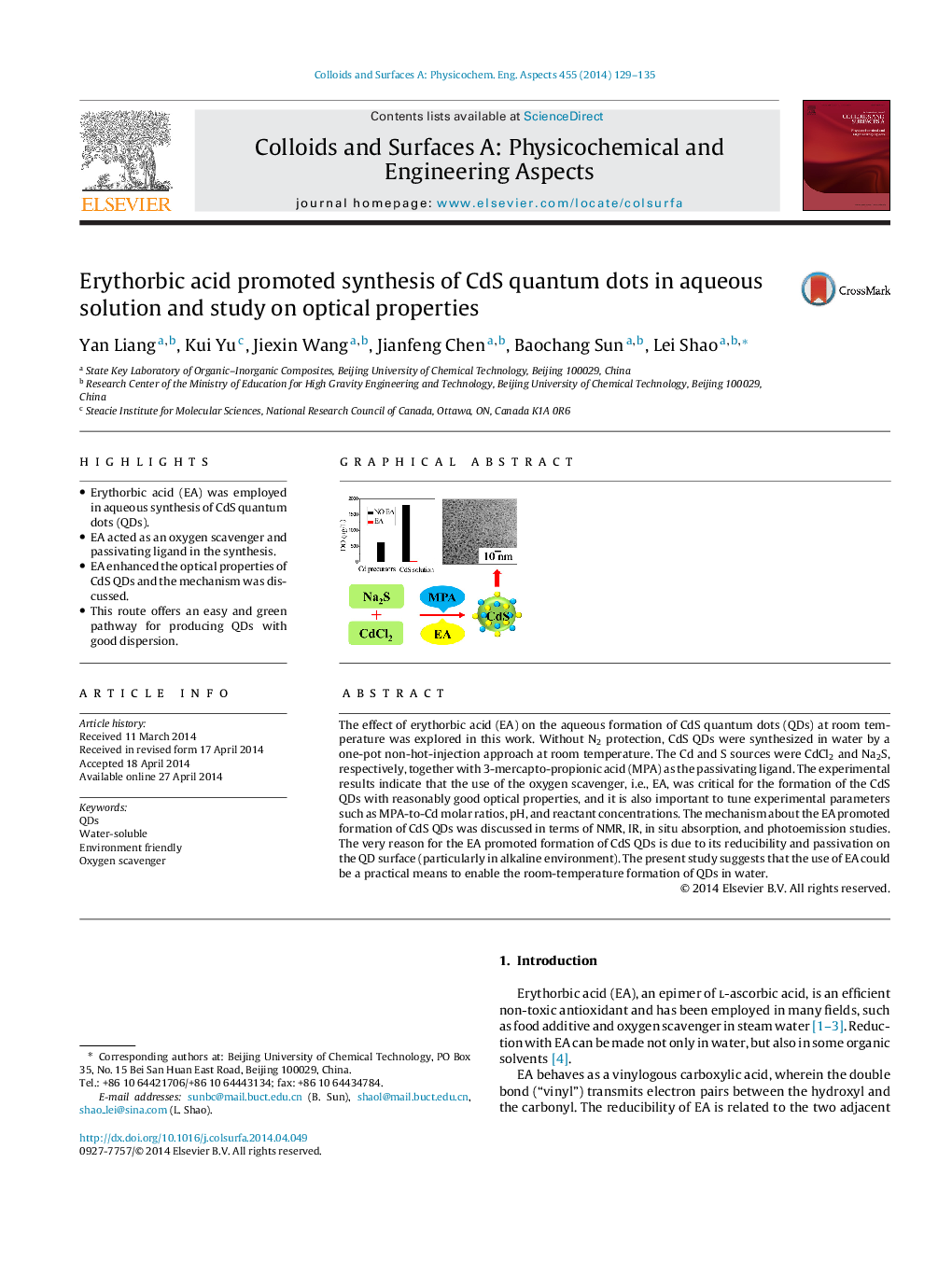| Article ID | Journal | Published Year | Pages | File Type |
|---|---|---|---|---|
| 592884 | Colloids and Surfaces A: Physicochemical and Engineering Aspects | 2014 | 7 Pages |
•Erythorbic acid (EA) was employed in aqueous synthesis of CdS quantum dots (QDs).•EA acted as an oxygen scavenger and passivating ligand in the synthesis.•EA enhanced the optical properties of CdS QDs and the mechanism was discussed.•This route offers an easy and green pathway for producing QDs with good dispersion.
The effect of erythorbic acid (EA) on the aqueous formation of CdS quantum dots (QDs) at room temperature was explored in this work. Without N2 protection, CdS QDs were synthesized in water by a one-pot non-hot-injection approach at room temperature. The Cd and S sources were CdCl2 and Na2S, respectively, together with 3-mercapto-propionic acid (MPA) as the passivating ligand. The experimental results indicate that the use of the oxygen scavenger, i.e., EA, was critical for the formation of the CdS QDs with reasonably good optical properties, and it is also important to tune experimental parameters such as MPA-to-Cd molar ratios, pH, and reactant concentrations. The mechanism about the EA promoted formation of CdS QDs was discussed in terms of NMR, IR, in situ absorption, and photoemission studies. The very reason for the EA promoted formation of CdS QDs is due to its reducibility and passivation on the QD surface (particularly in alkaline environment). The present study suggests that the use of EA could be a practical means to enable the room-temperature formation of QDs in water.
Graphical abstractFigure optionsDownload full-size imageDownload as PowerPoint slide
